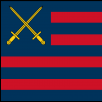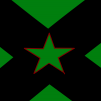Leaderboard
Popular Content
Showing content with the highest reputation on 06/06/21 in all areas
-
.thumb.png.4daa7e8c59da438450aaf48f86059164.png)
[Factbook] Kingdom of Giovanniland
Apexiala and one other reacted to Giovanniland for a topic
Demographics Administrative divisions Maps of the regions and municipalities of Giovanniland (open in a new tab and zoom for a close view). Three levels of division are commonly used for Giovanniland, although only two have actual administrative status. The first-level division are the two territories of Auran and Andolian Giovanniland, which do not have any administrative distinction but serve an important statistical purpose for when one needs to divide data by continent. Afterwards there are the eleven regions, six in Aura and five in Andolia. This system has its roots in the early Empire, when the joint emperors Iulio I and Nima I divided the new state into four regions, but it was Emperor Karlo that brought the Auran regions to their modern form and number, and Empress Anna II who founded the five Andolian regions after abolishing the former colonial divisions. Last but not least, the 632 municipalities are the base administrative divisions of the country, and they are divided into two categories. Most of the population lives in the urban municipalities, which are composed of a chief city and often some other areas and villages around it, administratively counted as part of the same city. The minimum population requirement for an urban municipality is 10,000 inhabitants, with some exceptions. Meanwhile, rural municipalities have lower population density and are home to smaller towns and villages as well as vast rural areas. Urban population does exist in them, but these towns usually don't meet the requirement to become a municipality of their own. Population Population density in the regions and municipalities of Giovanniland. The total population of Giovanniland was 29,305,150 in the 1420 Census, with a density of 74.2/km² and a ratio of men to women of 1.01:1. The ten largest cities are home to 6,167,052 inhabitants, while another 18,711,894 live in the other urban municipalities across the country, an urban rate of 85%. The average population density is just over 74 people per km², although the Auran lands are more densely populated with 114 per km², in comparison to the Andolian lands’ 41 people per km2. The most populous region is Giovannia Magna with 4,903,172 inhabitants, comprising 2,110,456 people living in the capital Giovannia and many more in the metropolitan area. Other populous regions are Lavandula (4,336,140 inhabitants), Abrenostro (4,180,293), and Prinvalli (3,831,529) in Aura, as well as Lido Flavi (3,155,639) in Andolia. On the other end of the spectrum are the regions of Spandorto (997,412) in Aura and Kordelleria (570,966) in Andolia, which also have the lowest population densities in Giovanniland, due to their vast mountainous and forest areas, home to several national parks. Censuses are as old as the Giovannian Empire, in a simpler form than today. There were 1.8 million people in the combined lands of Abrento and Lavandula when they unified to form the Empire, 17 million during the territorial peak in the late 11th century (6.5 million within the modern Giovannilandian borders), and 8.3 million when the Kingdom of Giovanniland was formed in 1225. Significant growth began during industrialization, reaching 10 million in the 1250s, 15 million at the start of the 14th century, 21 million in the 1360s, 26 million in the start of the current century, and now over 29 million. In a similar way to other developed nations, the growth decreased during the last century, although it has now stabilized and so has the fertility rate, which has fluctuated between 1.6 and 1.8 in recent times. Meanwhile, the life expectancy has steadily increased, and now stands at 82 years. Ethnicity, language and religion See also: Giovannese Language and 1420 Giovannilandian Census In the latest census, 27,241,573 people described themselves as Giovannese, the majority ethnic group across the entire nation, while the second largest group are the 1,616,693 immigrants. Afterwards there are the Native Andolians, who number 301,408 people and are divided into four main groups within Andolian Giovanniland—the Bereme in the west, the Ardala in the northeast, the Ulerge in the center and the Emune in the south. Last but not least, the Glenpavians and Minsunese are also recognized as an ethnic minority and together add up to 145,477. In the Auran Giovanniland, Giovannese are 93.16% of the population, followed by immigrants at 5.99%, Minsunese at 0.38%, Glenpavians at 0.33%, and Native Andolians at 0.14%. Meanwhile, for Andolian Giovanniland, the percentages are 92.50% Giovannese, 4.42% immigrants, and 3.08% Native Andolian. The national language is Giovannese, which evolved from Old Abrentan, the language that the Abrentans brought into Lavender Island from Saint Mark. It's therefore closely related to the Markan language, but has extensive influence from the Lavandulan language due to the integration between Lavandula and Abrento. On the other hand, in the topic of religion, the native Lavandulan faith persevered and was adopted by the Abrentans who contributed to its spread—this religion is Iantenism, adhered to by 72.31% of the population or 21,190,553 people. Iantenism began during the Lavandulan city-states era, featuring various deities such as Kalgio, sky god and creator of the world, and Lugiuna, the water goddess, although by the time of the Lavandulan Empire it was evolving to monotheism, with Kalgio earning the other deities' attributes. The religion's name comes from the core concept Ianteno, meaning the sacred and prosperous way, which includes but isn't limited to partaking in religious activities, doing good actions for others, and protecting nature. Education and health The students of most Giovannilandian schools have the freedom to choose their own school subjects alongside a basic curriculum in order to line up with what they wish to do in the future. High school and college are very competitive in the country, as students give their best to achieve better job opportunities. The country has a good reputation for student happiness and school procedures in Esferos, and also a high amount of bachelor's, master's and doctor's degrees. Giovannilandian high schools feature a special project called "idea incubator", in which dedicated students can start working on scientific projects from an early age, and then contribute their ideas to the nation with the help of government subsidies once they are older. Technological and scientific research is carried in the various universities in the country, with special units on the eight prefecture-level cities, the country's most advanced technological hubs. Universal healthcare is provided to every resident of Giovanniland, although private health services are also present. The health infrastructure includes at least five Basic Health Units and one major hospital with advanced technology per municipality, with the biggest hospitals being in the cities with over 100 thousand inhabitants. Nowadays, the national healthcare has also adopted nationwide electronic health records that both patients and doctors can access, and also a government app for mobile phones, so that patients can quickly schedule appointments. University hospitals are common, as it is fundamental that medical students have practice in order to graduate and become full workers for the healthcare system. Largest cities Rank City Population Region Rank City Population Region 1 Giovannia 2,110,456 Giovannia Magna 11 Vinikiano 238,927 Giovannia Magna 2 Porto Violeto 1,005,553 Prinvalli 12 Raffellia 224,012 Giovannia Magna 3 Andoliavilla 640,816 Lido Flavi 13 Flaviopole 217,221 Lido Flavi 4 Urido 502,819 Lavandula 14 Amorante 213,024 Prinvalli 5 Abrentopole 425,870 Abrenostro 15 Salvoregno 201,477 Prinvalli 6 Karlopole 347,106 Abrenostro 16 Dazano 181,632 Lavandula 7 Annavilla 328,736 Verdiante 17 Giovangrandi 167,336 Prinvalli 8 Isula Magna 302,873 Altana 18 Ioseppole 160,214 Tramontana 9 Nenofre 254,690 Lido Flavi 19 Baiabella 152,069 Prinvalli 10 Quorivo 248,133 Lavandula 20 Osellio 147,820 Lavandula Giovannia Porto Violeto Andoliavilla Urido2 points


